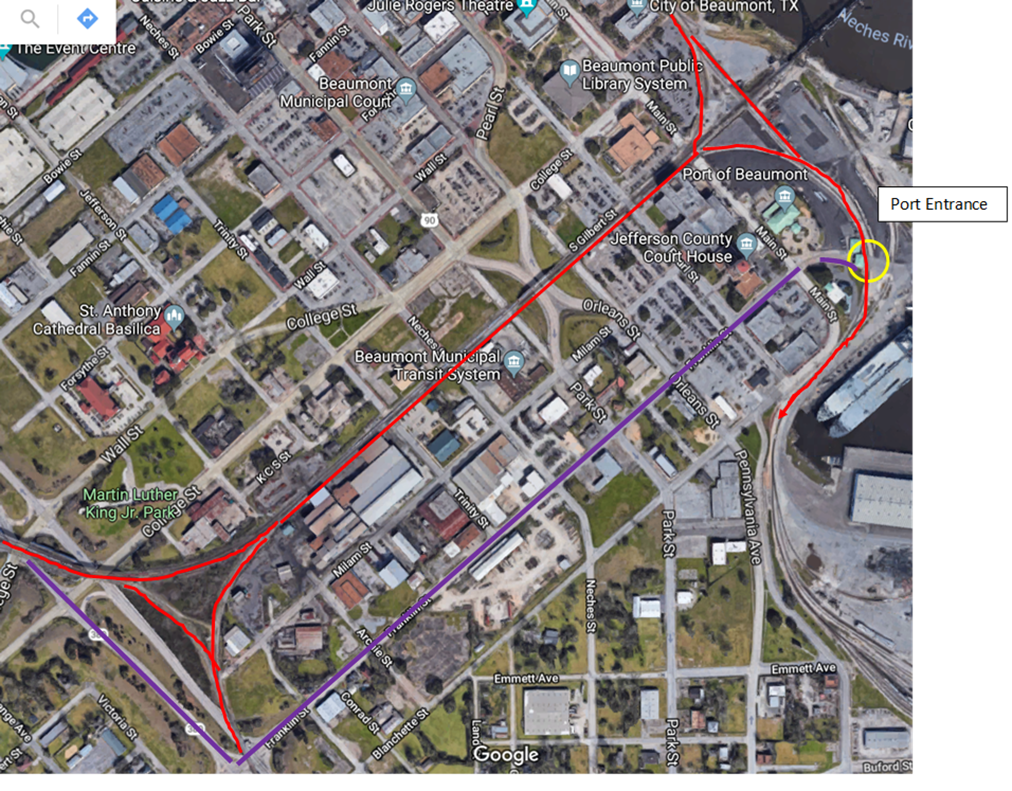In early May 2018, a group of researchers visited with management staff at the Port of Beaumont. The group discussed opportunities for the deployment of innovative Intelligent Transportation System (ITS) technologies focused on the management of truck freight traffic in and close to ports. The overall objective was to enhance freight traffic performance in terms of truck traffic delays, safety, and pavement wear and tear.
At the Port of Beaumont, trains often block the entrance to the port. The ability to monitor these trains and alert trucks to the fact that the port is blocked (or is about to be blocked) would help avoid traffic delays and queueing on city streets.
The video helps describe the situation and the interaction between the railroad and the entry roadway.
The map gives a larger view of the situation. Purple lines depict the major truck route and the red lines are the railroad. The traffic into and out of the port happens at the main gate and the railroad crosses that road right at the gate. Trucks stopped by the train can queue and overflow onto the streets in downtown Beaumont.

The port was planning to pursue the acquisition of property within a few city blocks of the port entry and transform the property into a truck waiting area. This new site would hold overflow trucks during times when entry into the port is slow, either from a train delay or other issues.
The train monitor system could operate changeable signs that would inform inbound trucks of the train delay and potentially suggest they go to the truck holding area rather than queue at the port entry. The signs would be located on the inbound main route of the trucks and another in the parking area giving information on port entry conditions.
The grade crossing monitor system used LIDAR technology to continually scan the roadway for a railroad target. The original design had the sensors aimed outside of the vehicle roadway but, as the project progressed, the research team created algorithms to identify trains amid passing vehicles. This development increased the overall usefulness of the sensor to monitor the roadway for vehicles as well as railcars.

The project operated for 2 years and continually collected train statistics. There were no identified situations where the deployed equipment and system did not detect a train. The larger challenge was to continually find, analyze, and eliminate false positive conditions.
The video shows a sample inbound train to the port. The train just happens to be aggregate again but there are other types as well including the very large windmill blades which are transloaded to rail cars at the port.
The following table illustrates the year 2022 rail activations at the port entry. Likely the most important data element is approximately 18% of all activations are greater than 5 minutes while over half are less than 1 minute.

